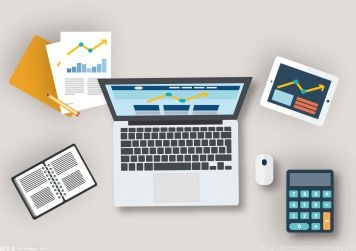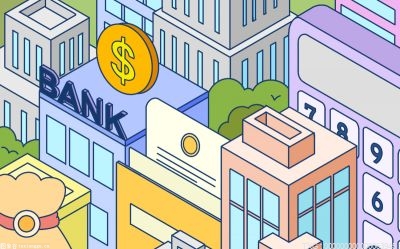With the popularity of smartphones and e-commerce platforms in Southeast Asia, online payment is becoming a new entrepreneurial trend in the region.
 (资料图片)
(资料图片)
In 2021, Southeast Asia"s total population reached 680 million, with nearly 500 million internet users and a high internet penetration rate of 73%. Due to the impact of the pandemic, Southeast Asia"s population is accelerating its shift from offline to online. According to the 2021 Southeast Asia Digital Economy Report jointly released by Google, Temasek and Bain, since the outbreak of the pandemic, six countries, including Singapore, Indonesia, Vietnam, Thailand, Malaysia, and the Philippines, have added 60 million new internet users, and the frequency of users" use of digital services and spending have also increased significantly.
"In the second half of 2021, when the pandemic in Southeast Asia was about to end, we believed that Fintech would usher in new opportunities, so we decided to enter this field." Mocasa CEO Robin Wong told TiPost App that the company received a $7 million A round financing from venture capital firm Bettasman at the end of 2021, focusing on virtual credit card business in the Philippines.
According to data from the Philippine Central Bank, in 2021, more than 36 million Filipinos did not have bank accounts and used cash as their main payment method. At the same time, due to the weak infrastructure of its own financial system, credit cards have never been popularized in the Philippines, which has greatly restricted national consumption.
In 2021 and 2022, the GDP growth rates of the Philippines were 5.6% and 7.6% respectively. Social liquidity is increasing, and traditional cash payment methods are no longer able to meet people"s diverse consumer needs. At the same time, the current per capita GDP in the Philippines is about $3,623, equivalent to China in 2009. It was also in this year that China"s state-owned banks began to make efforts to issue credit cards. From 2009 to 2011, the five major state-owned banks issued a total of 154.97 million credit cards, almost double the 85.31 million cards issued by the country"s joint-stock commercial banks.
Unlike the situation in China, although the per capita GDP is still at the level of China in 2009, the Philippines already has mobile internet technology as its foundation, which provides opportunities for Fintech companies that can respond more quickly.
In the past two years, the Fintech track in the Philippines has completed multiple financings. In May 2021, the financial technology company Mynt received a new financing of $300 million; in January 2022, BillEase announced the completion of a $11 million B-round financing, and three months later, it received another $20 million financing; in February, PayMongo completed a $31 million B-round financing.
Unlike most competitors" "installment payment" business, Mocasa is engaged in virtual credit card business. The former is more inclined to personal credit, similar to Alipay"s Jiebei; while the latter is mainly inclined to users" daily consumption scenarios, similar to Alipay"s Huabei, providing users with payment tools.
"Compared to personal credit products, Mocasa"s road will be more difficult," said Robin Wong. In addition to doing risk control for credit business, virtual credit card business also needs to pay attention to users" payment experience and enable users to successfully pay money to merchants" accounts. These are the two core capabilities that Mocasa must simultaneously take into account, while other competitors only focus on risk control of lending money to users.
In terms of the specific implementation path of the product, Mocasa chose to cooperate with one of the world"s largest credit card institutions, Mastercard, and the Philippine government"s QRPH QR code payment network promotion. Through the payment network of the latter two, Mocasa can quickly connect to various users and merchants. So far, Mocasa has connected more than one million merchants, covering daily areas such as clothing, food, housing and transportation.
At the same time, in the credit link, Mocasa can provide users with small loans with 50 days interest-free. In terms of loan interest rates, Mocasa"s average monthly interest rate is 3%-5%, which is a low interest rate standard in the Philippines.
According to Robin Wong, offline loans in the Philippines are mainly done by Indians, with an interest rate standard of "borrowing 5 and paying back 6" and a loan period of 30 days. Online loans are mainly done by Chinese and Americans, with an average monthly loan interest rate of 10%-15%. Local banks in the Philippines also provide some loan services with a monthly interest rate of 3%.
"Although the interest rates of banks are low, the service population of Philippine banks is only around 3 to 4 million, while there are more than 100 million people in the country," said Robin Wong. He pointed out that the two major trends of consumer finance that the Philippine government wants to promote are very clear. One is cashless payment, and the other is how to provide products to users at lower interest rates and cover more people.
As of 2021, the number of mobile users in the Philippines has exceeded 157 million, providing a foundation for the popularization of online payments. In February 2022, the Philippine central bank launched the "2022-2028 National Inclusive Financial Strategy," with the goal of expanding the proportion of adults using electronic payments to 70% by 2023, and the transaction volume accounting for 50% of its retail volume.
In such a big trend, the strength of risk control has become the key to success or failure of platforms like Mocasa.
"The improvement of user credit data is currently a major challenge for us," said Robin Wong. He pointed out that the level of national credit in the Philippines is equivalent to that of China in 2005, and the data is scarce. The credit system is not perfect, and only about two to three million people are effectively covered by credit reporting.
To improve the data, Mocasa chooses to cooperate with relevant third-party suppliers and obtain some users" social security and medical insurance data to check their work status and income level. In addition, Mocasa also uses data from telecom operators, such as the duration of phone usage, call and data package purchase costs, to judge the user"s credit level. Finally, Mocasa is also participating in the construction of the Philippine central credit reporting system, which can obtain users" credit reports.
In the past year, Mocasa has invested millions of dollars in building a risk control system, and has kept the bad debt ratio at 3%, which is the best level in the Philippines.
"It took China almost ten years to build a complete financial credit reporting system. Compared with China"s current level, the Philippines is currently in a stage of poor credit reporting and high interest rates, but it is also a time of many business opportunities," said Robin Wong. He believes that as the Philippines develops, its credit reporting system will become more complete, and interest rates will also become lower. Mocasa is actually following this trend.
As of now, Mocasa"s virtual credit card has obtained credit for more than 100,000 users, with a cost of less than seven US dollars per credit user and a repurchase rate of over 95% for old users. The monthly transaction volume exceeds ten million yuan, and Mocasa has basic coverage of franchise stores, gas stations, restaurants, boutiques, supermarkets, and other major cities in the Philippines.
According to Robin Wong, when the monthly GMV reaches 15 million US dollars, Mocasa can achieve profitability. Assuming an average monthly consumption of 100 US dollars per user, the platform still needs to absorb 50,000 new users. According to the plan, by the end of 2023, Mocasa"s monthly transaction volume will reach 20-30 million US dollars. In the next five years, Mocasa"s goal is to achieve an annual income of 3 billion US dollars, covering more than three countries in the "Belt and Road" and serving millions of credit card users and hundreds of millions of digital banking users.
(This article was first published on TiPost App, Author | Rao Xiangyu, Editor | Zhong Yi)
标签:
-

Replicate Ant Credit Pay in a Country of 36 Million People Without Bank Accounts|世界热文
Withthepopularityofsmartphonesande-commerceplatforms
-

电脑怎么开显卡高性能_显卡高性能怎么开
1、双显卡切换在WIN7 8系统上才有的功能,在XP上无法切换。2、这里...
-

12月10日是什么生辰花_12月10日是什么星座
1、12月10日出生的人所属:射手座。2、射手座11月23日-12月21日。3...
-

铃儿响叮当简谱_灵儿想叮当 每日热点
1、啦啦啦 怎么南瓜马车载着叮当绕过几里外玻璃鞋还忘了带灵儿...
-

全国简牍书法作品邀请展在平开展
平报融媒记者曹晓雨5月8日,从市文联传来消息,全国简牍书法作品邀...
-

环球微动态丨中消协:一季度全国消协组织投诉解决率达78.41%
中消协:一季度全国消协组织投诉解决率达78 41%
-

《Painting VR》更新:零重力、座椅模式、视觉升级 天天观焦点
近期,VR油画模拟应用《PaintingVR》推送春季大更新,本次更新带来...
-

豪鹏科技(001283.SZ):2022年度利润分配10派3元 股权登记日5月16日
格隆汇5月8日丨豪鹏科技(001283 SZ)公布,公司2022年年度利润分配...
-

贵州高院出台24条举措助力乡村振兴
近日,贵州高院出台《关于深化人民法庭服务保障全面推进乡村振兴的...
-

世界新动态:索菲亚: 2022年年度权益分派实施公告
索菲亚:2022年年度权益分派实施公告
-

可复制的漂亮特殊符号网名_可爱的表情符号_当前快讯
1、???????????????。以上就是【可复制的漂亮特殊符号网名,可爱的...
-

没有广告的象棋 没有广告浏览器_每日快讯
今天来聊聊关于没有广告的象棋,没有广告浏览器的文章,现在就为大...
-

今日热讯:社会“认养”唤醒“中国最美乡村”
原标题:社会“认养”唤醒“中国最美乡村”日出而作、日落而息,有...
-

九亿桂惠贷“贷”动广西藤县县域经济新发展 世界快消息
中新网广西新闻5月8日电(黄麟)“每年茶季时到藤县农信社办理贷款...
-

周燕飞赴花垣调研基层矛盾风险防范督导安全生产工作
红网时刻新闻5月8日讯(通讯员张明麻秋慧)5月6日下午,副州长、州...
-

塔木陀养老院_塔木陀
1、塔木陀,明朝早期的一个小国,具体位置不详,可能位于东南亚或者...
-

中超公布即将开赛的中超规程 第一阶段的比赛外援使用规则上作了调整
2020中超联赛俱乐部总经理会议于7月7日下午在上海建工浦江皇冠假日...
-

刚果(金)东部洪灾已致近400人遇难,山体滑坡掩埋两村庄
当地时间5月7日,刚果民主共和国官员表示,刚果(金)东部的洪水和...
-

废铝日评:铝价回升废铝普涨100元/吨 补库需求增多市场成交尚可_每日快看
今日现货铝价止跌回升,华东A00现货铝价上涨110元 吨,报于18470元...
-

热议:红娘子2什么时候上映_红娘子2
1、windows系统自带的计算器程序叫做calc exe,其路径是X:WINDOWSsystem32calc exe
-

焦点热门:白酒股午盘震荡下行 贵州茅台股价跌幅为1.39%
北京商报讯(记者翟枫瑞)5月8日,白酒板块午盘走弱,以2647 71元...
-

苹果验真假最简单办法 如何鉴别真假 iPhone?
苹果iPhone好用但价格高昂,你会去哪里购买苹果iPhone手机呢?相关...
-

天津市:推动建筑用能电气化和低碳化
天津市发改委等10部门近日印发《天津市清洁生产推行工作方案(2023-...
-

省防震抗震(抗震救灾)指挥部会议 暨全省防震减灾工作会议召开 乔彦强在漯河分会场收听收看
5月7日,省防震抗震(抗震救灾)指挥部会议暨全省防震减灾工作会议...
-

南阳镇平:雨后北顶 宛若仙境
央广网南阳5月8日消息(记者彭华)近日,一场新雨过后,河南省南阳...
-

iQOO Pad有望5月23日推出 或与iQOO Neo8一同发布
近日,在社交平台上出现了2张疑似是iQOO新品的海报宣传图,该海报图...
-

堆叠大陆如何获得树皮 堆叠大陆获得树皮方法介绍|热议
堆叠大陆如何获得树皮堆叠大陆获得树皮方法介绍,
-

全球热文:油脂市场重心下移之后步入新的震荡区间
【油脂市场重心下移之后步入新的震荡区间】油脂市场重心下移之后步...
-

世界快看点丨海森药业(001367)5月5日主力资金净卖出5784.23万元
截至2023年5月5日收盘,海森药业(001367)报收于52 81元,下跌10 0...
-

"牛市旗手"最新持仓曝光!一季度重仓506股,疯狂加仓传媒,减持地产和医药 世界今日讯
随着资本市场行情回暖,券商一季度业绩也凭借自营投资业绩的回升打...
